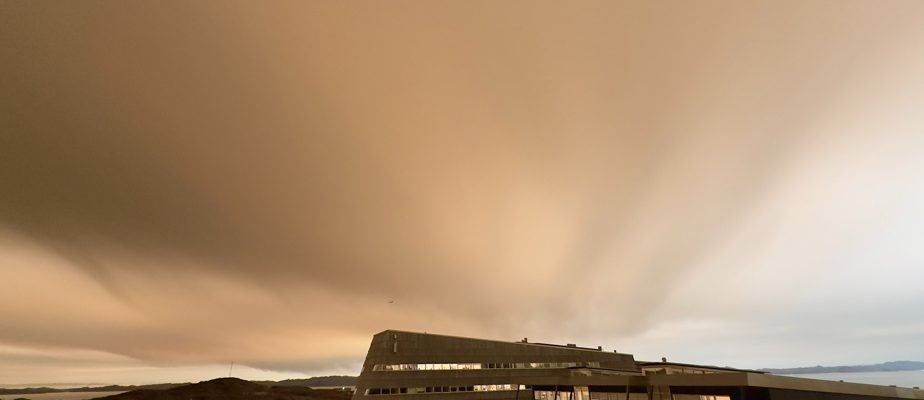Smoke from Canada’s wildfires reached Greenland earlier this week, darkening the sky and affecting air quality.
What there is to know
- Smoke from Canadian wildfires reached Greenland earlier this week.
- The unusual phenomenon is attributable to a weather depression in the north of mainland Nunavut, explains Environment and Climate Change Canada.
- The smoke also affects Baffin Island, Nunavut.
Cars and outdoor furniture were even covered in soot in various locations on the west coast of the autonomous Danish territory, and local police received calls from concerned citizens, the daily reported. Sermitsiaq.
“On Monday, it was as if the sun had never risen, even at midday it was very dark,” he told The Press Quebec oceanographer Caroline Bouchard, who lives in the capital, Nuuk.
It was an apocalyptic atmosphere, with big black clouds and an intense smell of smoke.
Caroline Bouchard
The authorities also recommended people suffering from lung diseases to stay indoors on Monday.
It is a meteorological depression in the north of the continental region of Nunavut which would have pushed the smoke as far as Greenland, explains meteorologist Natalie Hasell, of Environment and Climate Change Canada.
“The winds associated with this system come from northern Alberta and the Northwest Territories, down the central part of Saskatchewan, and then up towards Baffin Island,” she explains, adding that the community of Iqaluit, Nunavut, also found itself covered in smoke.

PHOTO FROM AGNETHA MIKKA PETERSEN’S FACEBOOK PAGE
A second factor explains why the smoke remained dense over such a long distance, adds Mme Hasell: the absence of “vertical mixing” of the air.
“The conditions were such that there was not much […] turbulence, instability, to dilute the concentration of the smoke,” explains the meteorologist.
This smoke comes from fires raging in the Northwest Territories and northern British Columbia, Alberta, Saskatchewan, Manitoba, Ontario and, to a lesser extent, the Quebec, she specifies.
Unusual
It is unusual for smoke from Canadian forest fires to reach Greenland, said Caroline Bouchard, who had never seen anything like it in her seven years there.
In June, when smoke from the Canadian fires reached New York, there had been “a few red sunsets in Greenland because of the smoke particles, but there had been no smell or black clouds,” she said. .

PHOTO FROM AGNETHA MIKKA PETERSEN’S FACEBOOK PAGE
“But I am from Chibougamau, so the forest fires worry me a lot after the evacuation last summer,” confides the researcher.
Although it is not common for smoke from Canadian fires to reach Greenland, the phenomenon is not surprising, says Natalie Hasell.
“We repeatedly see smoke coming from Siberia to Canada,” she explains, adding that it has happened several times that smoke from Canadian fires reaches France.
And the volume of smoke does not have to be very large for it to travel far, adds the meteorologist.
“A few years ago, smoke from one or two fires in Alberta carried into the region [française] of the Loire,” she recalls.
The smoke has now cleared in Greenland, the air quality has returned to good and is expected to remain so in the coming days, according to weather forecasts.
On the other hand, Iqaluit is still in the plume of smoke and the air quality remains lower there, observes Natalie Hasell, even if the situation improved slightly on Wednesday.
What is the difference between a depression and an anticyclone?
A depression means that the atmospheric pressure, or the weight of the air on the ground, is lower in a given area than in the surrounding areas, explains meteorologist Natalie Hasell of Environment and Climate Change Canada. Conversely, an anticyclone means that the atmospheric pressure is higher in a given area than around it. In Canadian latitudes, depressions are associated with windy weather and precipitation, while anticyclones are synonymous with fair weather and very cold or very hot temperatures.
Learn more
-
- 56,865 inhabitants
- population of Greenland as of 1er July
Source: Government of Greenland
